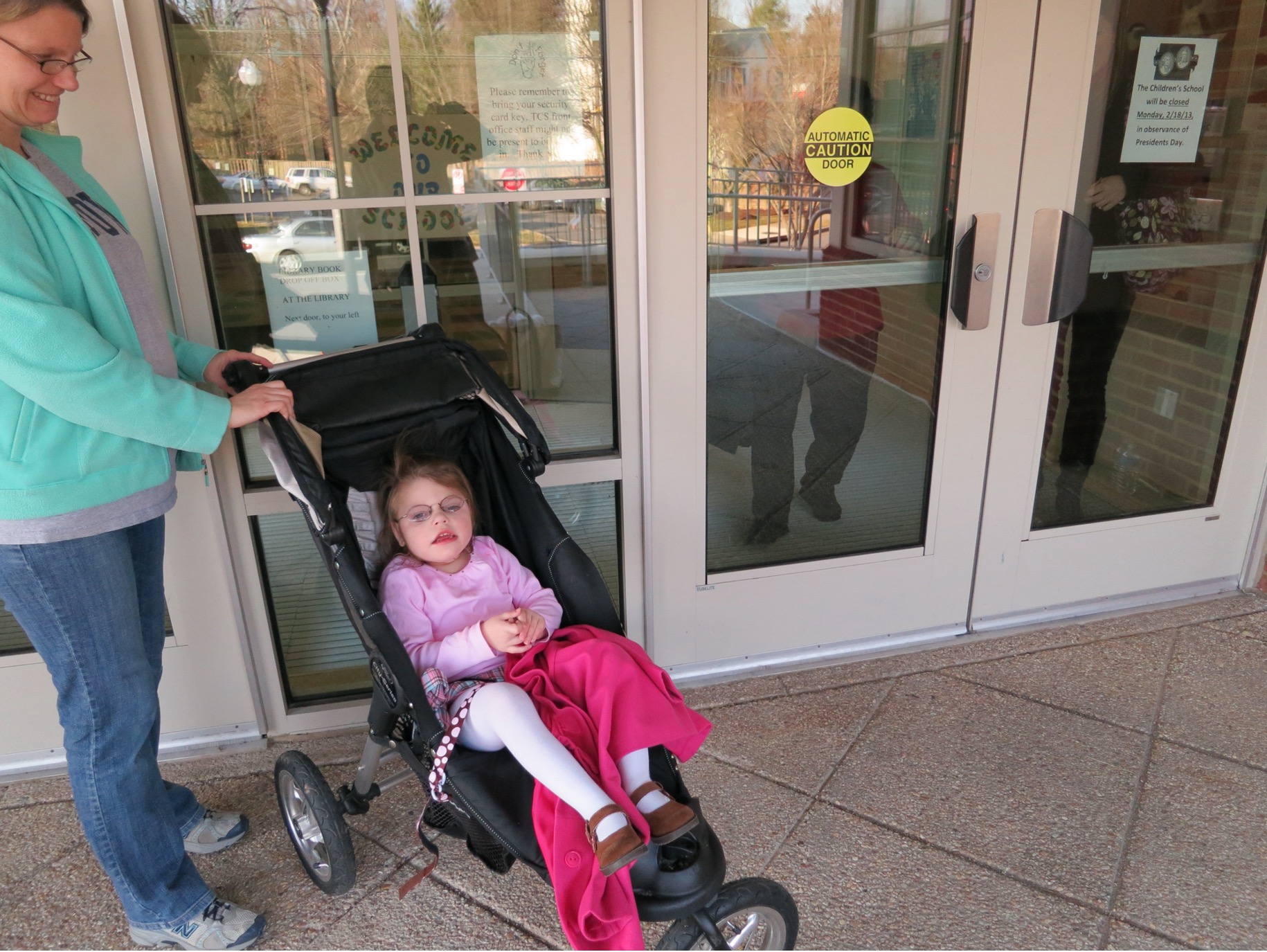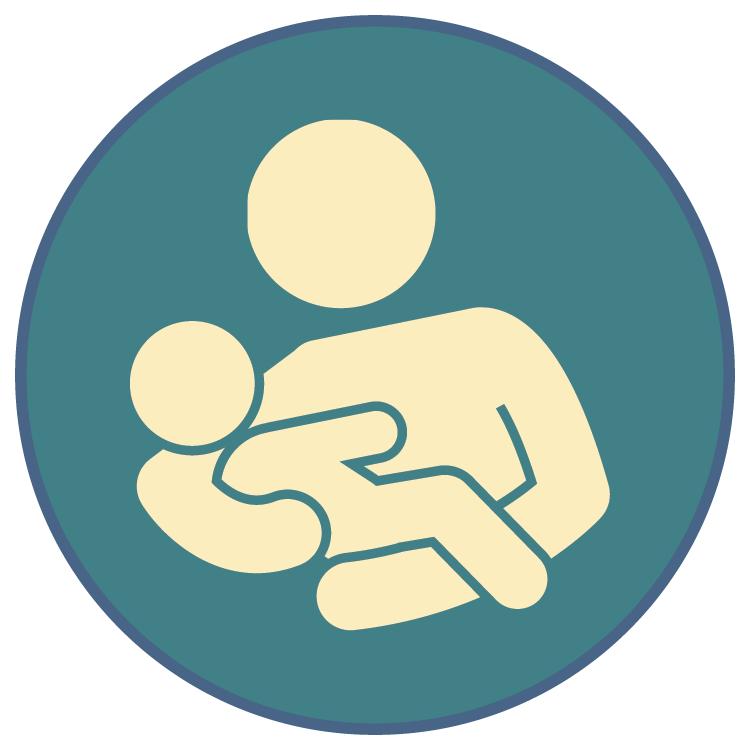Lesson 4 - Preparing for Transition to Preschool
In this lesson, we’ll focus on what is involved in preparing for a major transition in the life of a child, the move from early intervention to preschool. As you will see, early intervention providers play a significant role throughout this process for children who are deafblind and their families. This lesson provides specific strategies to help the family, the preschool staff, and the child get ready for this exciting time of life.
For more information, visit the National Center on Deafblindness at nationaldb.org.

Lesson 4 has three learning objectives. After completing the lesson, participants should be able to
- Demonstrate strategies to support caregivers of children who are deafblind during the transition from early intervention to preschool
- Provide detailed information to a receiving preschool team about a child who is deafblind that will help them meet the child’s unique educational needs
- Describe specific strategies caregivers can use to make the transition to preschool as smooth and enjoyable for the child as possible
Part 1 - Preparing the Family for Transition to Preschool
In Part 1, you’ll learn what it can be like for the family when their child who is deafblind transitions to preschool and how you can support them.
Activities
Instructors: The following activities can be adapted for a variety of purposes. For example, have participants turn in written or posted responses, or use the topics and questions as discussion starters. Some can be used for group activities.
Option 1
What issues or concerns might the family of a child who is deafblind have related to their child’s transition from early intervention to preschool? What can early intervention providers do to help support the family’s transition?
Option 2
Unless they have another child who has received special education services, parents of a child who is deafblind will likely have questions about the IEP process and their role in it. What you would want to discuss with parents about the IEP process and the IEP team?
Option 3
Review the HomeTalk assessment tool. As you’ve learned, it includes questions about a child’s health, communication skills, and hearing and vision, as well as their interests, talents, habits, routines, and behaviors. Take time to observe a child around age 2 or 3 (does not need to be deafblind) and answer the questions in “Part 3: What are my Child’s Competencies?” based on your observations. When you are done, explain what a preschool provider would learn about the child from your responses.
Part 2 - Preparing the Preschool Staff
Part 2 focuses on specific strategies you can use to prepare preschool staff, who may not have prior experience working with children who are deafblind.
Activities
Instructors: The following activities can be adapted for a variety of purposes. For example, have participants turn in written or posted responses, or use the topics and questions as discussion starters. Some can be used for group activities.
Option 1
You learned in this section that you may need to explain to preschool teachers, related service providers, and others what deafblindness is and how it impacts a child’s ability to communicate, access information, and form relationships. What are three things you would specifically want them to know about children who are deafblind?
Option 2
Some educational strategies used with students who are deaf or hard of hearing and some used with those who are blind or have low vision will be helpful for children who are deafblind, but many will not. Explain why this is so.
Option 3
Preschool staff will need to have a good understanding of a child who is deafblind in order to conduct assessments in ways that allow the child to demonstrate what they know and how they learn. In addition to observing and interacting with the child, what can they do to improve their understanding? What are some tools that are commonly used to gather this kind of information about children who are deafblind?
Part 3 - Preparing the Child for Transition to Preschool
In Part 3, you’ll learn how to help a child who is deafblind get ready for a successful transition from early intervention to preschool.
Activities
Instructors: The following activities can be adapted for a variety of purposes. For example, have participants turn in written or posted responses, or use the topics and questions as discussion starters. Some can be used for group activities.
Option 1
Imagine that you are working as an early intervention provider for a child who is deafblind, and the child is beginning the transition to preschool. The parent wants to continue working on the child’s IFSP outcomes, which include (1) develop positive social relationships with peers, (2) learn to identify two new colors, and (3) develop greater independence in daily routines and activities. You want to encourage the parent to start focusing on skills that will be helpful to develop for preschool. Which of these three outcomes would you recommend working on the most and why?
Option 2
You have learned that an important strategy to help prepare a child for preschool is to expose them to different environments outside of the home. What are three places or activities in your community that you would recommend to the parent of a child who is deafblind? These should be places that expose the child to new sounds, lights, textures, smells, and experiences that are likely to also be found in a preschool setting. Why did you select each of these places and/or activities?
Quiz
Instructors are welcome to use this quiz as-is or adapt it to meet their needs. It can be used to test participants’ knowledge following completion of the module or for pre- and post-test evaluation. To obtain answers to the quiz, instructors should contact support@nationaldb.org.
Assessment Tools
The Assessment Tools below are the same as the ones listed in Lesson 1, with the exception that the Home Inventory of Problem-Solving Skills has been replaced by the School Inventory of Problem-Solving Skills.
The Communication Matrix helps you identify and understand a child’s ways of communicating long before they use spoken or signed words. This is useful for showing communication progress, even when it follows a different course and pace than for typically developing children.
This Likes and Dislikes webpage from the Washington DeafBlind Program provides a process and form you can use to learn about a child’s preferences.
The School Inventory of Problem-Solving Skills is designed to assess the early cognitive development of children who have severe or multiple disabilities—and are not able to speak—by determining how well they understand the physical environment at school and solve problems that arise within it. It can be ordered from Design to Learn.
HomeTalk is especially useful in the six months prior to a child’s third birthday. It helps a family think about and record information needed for introducing their child to a new school team. HomeTalk also assesses a child’s strengths in several developmental domains, and connects their areas of need to IEP goals. Also available in Spanish.
Additional Resources
Transitioning from Early Intervention to Preschool
Resources to help families and practitioners make a smooth transition from early intervention services to preschool
Appropriate Assessment Strategies: NCDB Practice Guide
A list of essential components and skills needed to conduct assessments of children who are deafblind
Approach to Assessment
Extensive resources for school teams on an overall approach to assessment of children who are deafblind as well as resources on assessment of communication, learning, and use of sensory channels
State Deaf-Blind Projects
Contact information for deafblind projects in every state, as well as Puerto Rico, the District of Columbia, the Pacific Basin, and the Virgin Islands
